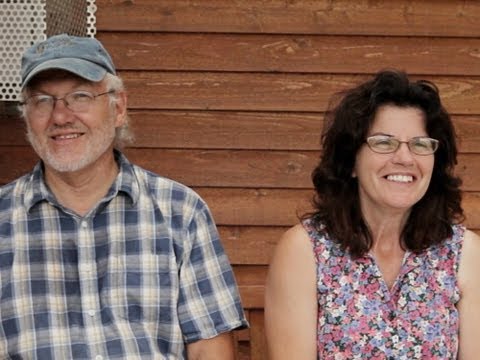Hidden Spring's Brenda on Following the Curd & Washing Vats on Toes
 Brenda Jensen's path from earning an MBA and working as an operational manager in the packaging industry to waking up at light break every morning to check on 550 sheep and cut curds in a steamy make room may seem surprising to some. It certainly was to the Jensens who now make the award-winning cheeses of Hidden Springs.
Brenda Jensen's path from earning an MBA and working as an operational manager in the packaging industry to waking up at light break every morning to check on 550 sheep and cut curds in a steamy make room may seem surprising to some. It certainly was to the Jensens who now make the award-winning cheeses of Hidden Springs.
When Brenda and her husband first bought fifty dairy sheep in the middle of Wisconsin Amish country, their plan was to launch a creamery. Dean and Brenda would milk the sheep and then hire someone to make cheese, they thought. Brenda would keep her full-time, well-paying job that likely had a retirement plan. But then the couple decided to take a class and visit local sheep’s milk cheesemaker Mary Falk at Love Tree to learn more about the ins and outs of their future business. This shook things up.
Brenda fell in love. With everything. With the feel of the curds on her fingers, the scent of the make room, the texture of sheep's milk, the mix of artistry and science. She might have even liked the hair net she was required to wear.
“My feet didn’t touch the ground for days,” she says laughing, “I was in love. I told Dean, ‘I think I found the cheesemaker. I think it’s me!’
“I still get goosebumps when I smell warm milk,” she says.

Though Brenda couldn't be stopped after she walked her boots through the sanitizer into a make room for the first time, she ran into a few glitches along the way. At forty-four years old, she was a newbie. And she was a petite (yet strong) woman often training at cheese plants with men who grew up next to cheese vats.
She admits being a female cheesemaker sometimes made her have to work harder. One cheesemaker at a location where she trained didn’t let her cut the curd until her third shift on the job. But even though she had to stand back and watch and clean a lot in the beginning, she says, she noticed she was treated differently after the first year.
“They started looking at me like, ‘Huh, maybe she is really going to make cheese.”
That she did. Brenda quit her job, trained for her cheesemaking license, and translated her inspiration into eight different cheeses at Hidden Springs. My favorite of her vibrant cheeses are Timber Coulee, Bohemian Blue, Ocooch Mountain, and her mixed cow and sheep’s milk wheel, Meadow Melody, which I profile in my book (awesome with cherry conserve or confit).
Brenda now knows she can pick up the phone any time and receive support. She sites her biggest influences after Falk among Wisconsin’s and even the country’s food and cheese best- the team at Uplands (especially Mike Gingrich who helped her in her early years), goat cheesemaker Ann Tapham, Willi Lehner of Bleu Mont, Ari Weinsweig of Zingerman’s, Ranee May, Jeanne Carpenter, and Kate Arding of Talbott and Arding.
Beyond professional guidance, she can also call any of her five children to bring over one of her twelve grandchildren if she needs using the power hose in the make room.
“They like to say they made cheese with grandma,” Brenda Says, “they also like to ride the carts around the farm.”
When asked if she had any advice for aspiring cheesemakers who are starting out who may or may not have their children or grandchildren to help them, Brenda said she did especially for people of her stature (raising my hand right here).
Think long and hard about your milk buckets and vats and do so creatively. For example, the standard milk pails are so heavy, she had to roll hers the first time she used them. She suggests going with gravity flow tanks and smaller buckets.
“My toes don’t reach the ground when I’m washing the vat- something to think about when buying one!” she says, laughing.
Either way, this is one whip-smart and ambitious grandmother with an MBA that won't let an inch or two stop her.
